Best Clarinet Mouthpieces for Beginners: Complete Guide 2025
Learning clarinet is tough enough without bad equipment making it harder. You’ve got fingerings to memorize, music to read, and that tricky mouth position to figure out. But here’s something many new players miss: that little black piece at the top of your clarinet can make or break your sound.
I’ve seen too many students get frustrated because they’re fighting their mouthpiece instead of making music. A cheap or poorly made mouthpiece makes everything harder from getting a clear tone to playing in tune. But when you find the right one, suddenly everything clicks.
This guide covers the best clarinet mouthpieces for beginners that actually work. No fancy marketing talk, just the ones teachers recommend year after year and students love playing on.
Why Your Mouthpiece Matters More Than You Think
Before we look at specific mouthpieces, let’s understand why this little piece is so important.
The clarinet mouthpiece works hand in hand with your reed to create vibrations. These vibrations then travel through your clarinet, making the sound. If your mouthpiece isn’t right for you, it can make playing feel much harder than it needs to be.
Here’s what a good beginner mouthpiece should do:
- Make Sound Easily: You shouldn’t have to blow super hard to get a note out.
- Produce a Clear Tone: Fewer squeaks, more sweet sounds!
- Help with Pitch: Make it easier to play notes in tune.
- Be Forgiving: Allow for a little wiggle room as you learn proper embouchure (how you shape your mouth on the mouthpiece).
Quick Picks for Beginners
For those in a hurry, here are our top recommendations right off the bat:
| Mouthpiece | Best For | Price Range |
|---|---|---|
| Yamaha 4C | All-around best for absolute beginners | Affordable |
| Hite Premiere | Great value, easy to play, good upgrade | Affordable |
| Vandoren B45 | For beginners ready for a slightly richer sound | Mid-range |
Understanding Your Clarinet Mouthpiece: A Mini Lesson
You don’t need to be an expert, but knowing a few key terms will help you understand why certain mouthpieces are recommended.
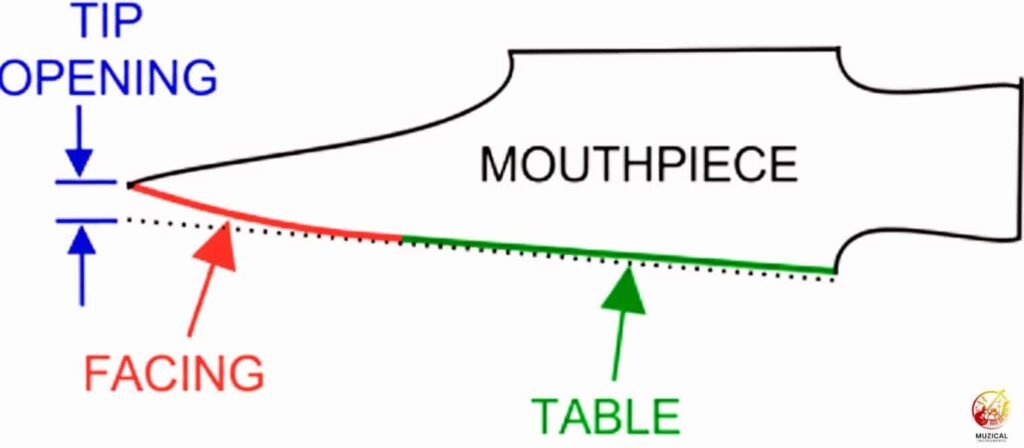
- Tip Opening: This is the distance between the tip of the mouthpiece and the tip of the reed. A smaller opening (like on most beginner mouthpieces) makes it easier to produce a sound with less effort.
- Facing Length: This is how long the curve on the mouthpiece goes before it touches the reed. A shorter facing often works well with softer reeds for beginners.
- Baffle: This is the ceiling inside the mouthpiece. It affects how bright or dark your sound is. Beginners usually do well with a simpler baffle design.
- Material: Most beginner mouthpieces are made from plastic (very affordable) or ebonite (hard rubber, a popular choice for its tone and feel). Ebonite generally offers a warmer, richer sound than plastic.
The Best Clarinet Mouthpieces for Beginners
Let’s look at the mouthpieces that teachers and pros consistently recommend for new players.
1. Yamaha 4C – The Beginner’s Best Friend
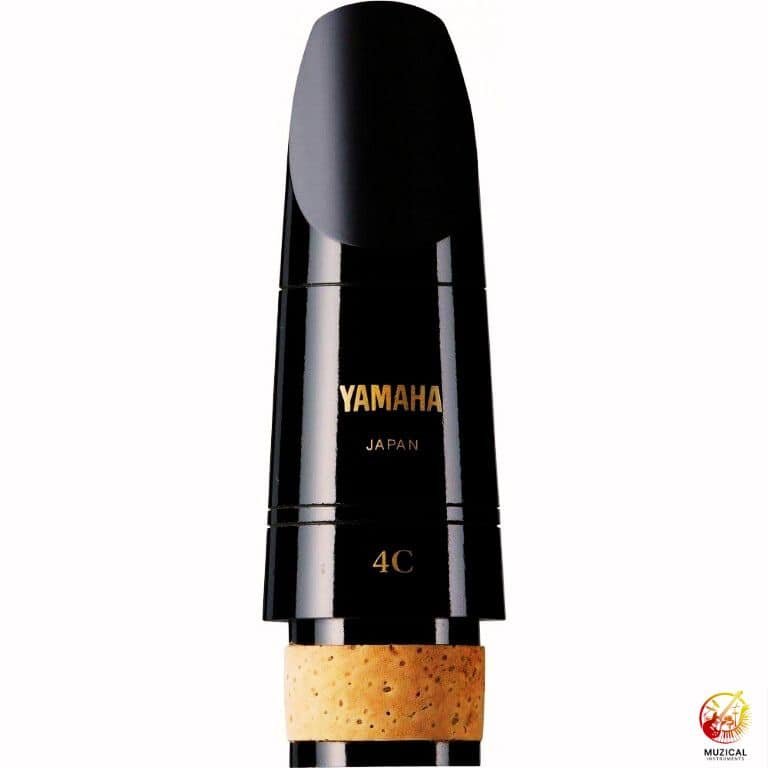
If there’s one mouthpiece that almost every clarinet teacher recommends for beginners, it’s the Yamaha 4C. And for good reason!
- Material: Phenol Resin (a type of durable plastic)
- Tip Opening: Fairly closed, which makes it easy to blow.
- Ideal Reed Pairing: Typically works well with softer reeds (strength 2 to 2.5).
Why it’s great for beginners:
- Super Easy to Play: It’s designed to help you make a sound with minimal effort. This is huge for building confidence!
- Consistent Sound: You’ll get a clear, predictable tone every time.
- Affordable: It won’t break the bank, making it a perfect first upgrade.
- Durable: Made from tough plastic that can handle a few bumps.
Things to consider:
- While great for starting, you’ll likely want to upgrade as you improve for a richer sound.
2. Hite Premiere – Excellent Value, Smooth Sound
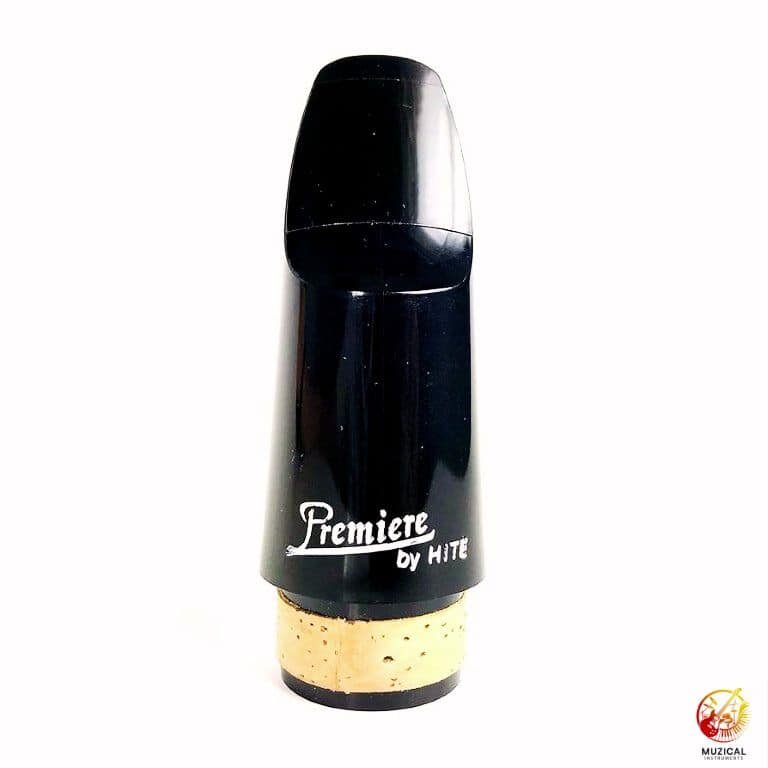
The Hite Premiere is another fantastic choice that often gets overlooked but comes highly recommended by those in the know. It offers a step up in sound quality without a big jump in price or difficulty.
- Material: Ebonite (hard rubber)
- Tip Opening: Similar to the Yamaha 4C, making it beginner-friendly.
- Ideal Reed Pairing: Reeds strength 2 to 3.
Why it’s great for beginners:
- Warm, Richer Tone: Because it’s ebonite, it generally produces a warmer, more pleasing sound than plastic mouthpieces.
- Easy to Play: Designed with beginners in mind, it responds well.
- Great Value: Offers a fantastic balance of quality and affordability.
Things to consider:
- It might be a tiny bit more challenging than the Yamaha 4C for a complete novice, but not by much.
3. Vandoren B45 – Stepping Up Your Sound
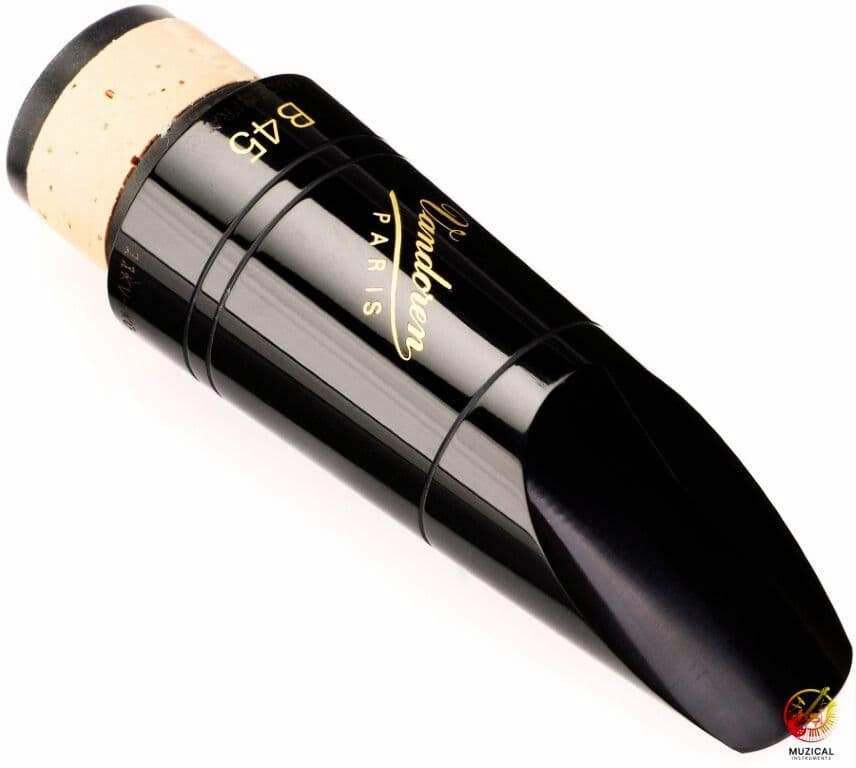
Vandoren is a legendary name in the clarinet world, and their B45 mouthpiece is a favorite among students and professionals alike. While it has a slightly more open tip than the Yamaha 4C or Hite Premiere, it’s often considered a great “next step” for a beginner who is starting to get comfortable with their instrument.
- Material: Ebonite
- Tip Opening: More open than the 4C, but still manageable for developing players.
- Ideal Reed Pairing: Reeds strength 2.5 to 3.5.
Why it’s great for advancing beginners:
- Rich, Full Tone: Known for its beautiful, dark, and flexible sound.
- Excellent Intonation: Helps you play more in tune.
- Versatile: Can be used in many different musical styles.
- Professional Quality: A mouthpiece you can grow with for years.
Things to consider:
- Might be a bit more challenging for a brand new player compared to the Yamaha 4C due to the slightly larger tip opening.
- It’s a bit more expensive than the entry level options.
4. Vandoren 5RV – A Classic Choice
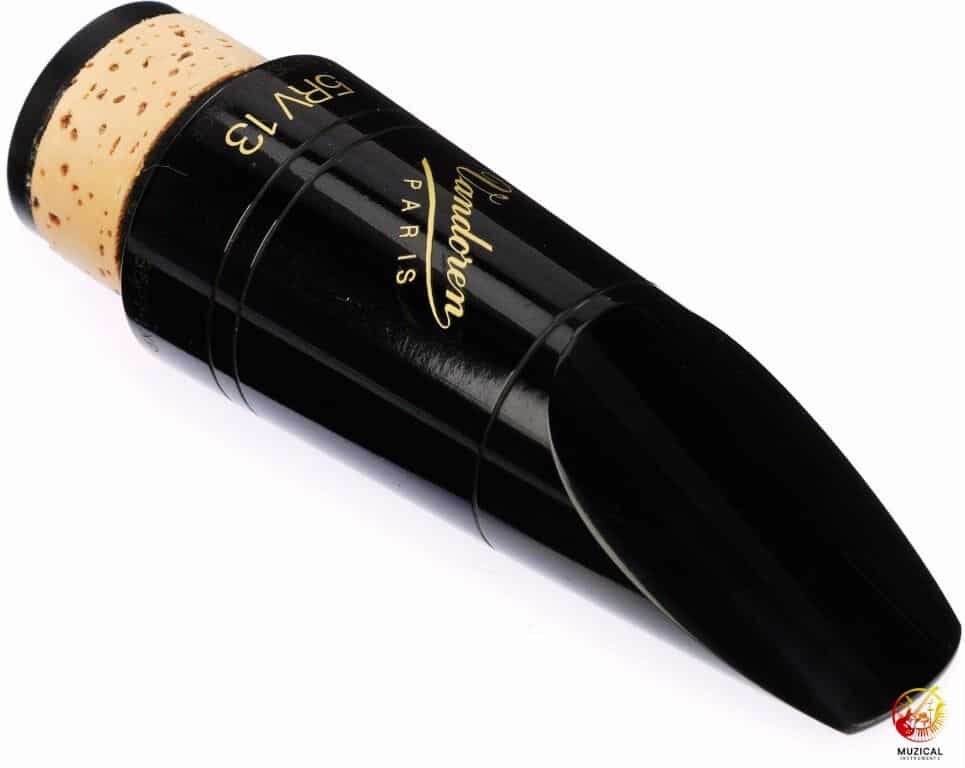
The Vandoren 5RV is another extremely popular mouthpiece from Vandoren, often recommended alongside the B45 for students moving past the absolute beginner stage. It’s known for being very stable and easy to control.
- Material: Ebonite
- Tip Opening: Slightly more closed than the B45, making it a little easier for some players.
- Ideal Reed Pairing: Reeds strength 2.5 to 3.5.
Why it’s great for developing beginners/intermediate players:
- Excellent Control: Offers great stability and makes it easier to play consistently.
- Clear, Focused Sound: Produces a beautiful, centered tone.
- Reliable: A tried and true choice that many players stick with for years.
Things to consider:
- Still a step up in terms of price and required embouchure control compared to the most basic beginner options.
- The B45 often gets picked for a slightly “rounder” sound, while the 5RV is known for being more “focused.” It often comes down to personal preference.
5. Clark Fobes Debut – Designed Specifically for Students
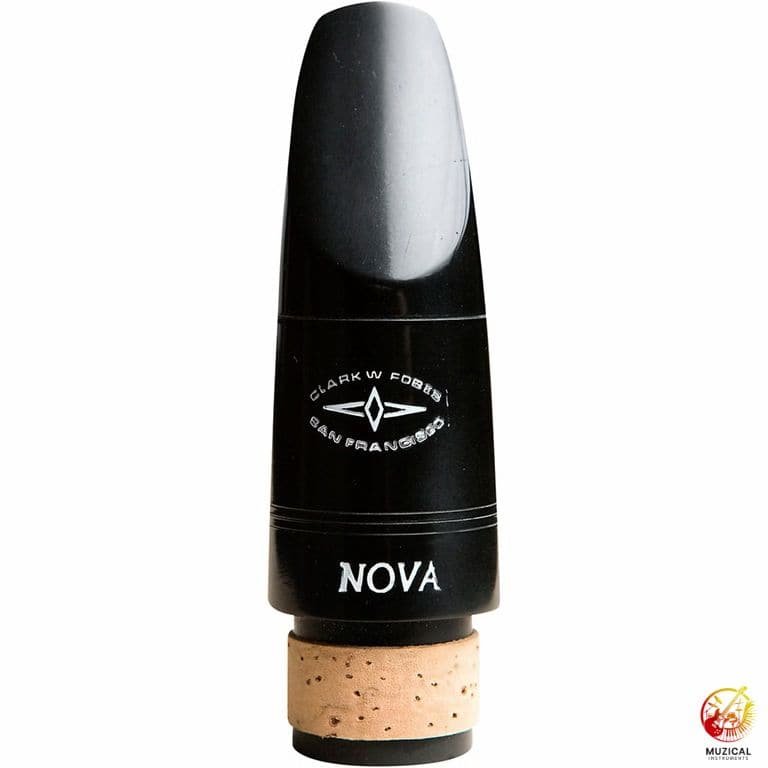
Clark Fobes is a well respected name, and his “Debut” series mouthpieces are specifically designed for student players. They aim to offer a professional level design but with the ease of play a beginner needs.
- Material: Ebonite
- Tip Opening: Designed to be forgiving for students.
- Ideal Reed Pairing: Flexible, works well with typical student reed strengths.
Why it’s great for beginners:
- Student Focused Design: Clark Fobes understands what beginners need to succeed.
- Quality Sound: Produces a surprisingly good tone for a student mouthpiece.
- Affordable: A very strong competitor to the Yamaha 4C in terms of price and performance for beginners.
Things to consider:
- May be a little harder to find in local music stores compared to Yamaha or Vandoren, but readily available online.
How to Choose the Perfect Mouthpiece for YOU
Even with our recommendations, the “best” mouthpiece is personal. Here’s how to make your final decision:
- Talk to Your Teacher: This is the most important step. Your band teacher or private instructor knows your playing style and can give you tailored advice. They might even have a few mouthpieces you can try!
- Consider Your Budget: Mouthpieces range from very affordable to quite expensive. Start with what you can comfortably spend. The Yamaha 4C, Hite Premiere, and Fobes Debut are excellent, budget friendly choices.
- Try Before You Buy (If Possible): If a music store allows you to try mouthpieces (with your own reed, of course, and good hygiene!), take advantage of it. Listen for ease of sound production, tone quality, and comfort.
- Pair with the Right Reed: Remember, the mouthpiece and reed are a team! Softer reeds (like a 2 or 2.5) are usually best for beginners and pair well with beginner mouthpieces. As you improve, you might move to slightly harder reeds.
- Don’t Rush the Upgrade: If you’re using the Yamaha 4C and feeling good, there’s no immediate rush to change. Enjoy playing and let your teacher guide you when it’s time for a new challenge.
When Is It Time to Upgrade from Your Stock Mouthpiece?
Most clarinets come with a plastic mouthpiece that’s okay for getting started. But you’ll quickly outgrow it. Here are some signs it’s time for an upgrade:
- You’re struggling to get a good tone, even with proper technique.
- Your sound feels thin or lacks richness.
- You’re having trouble playing in tune.
- Your teacher suggests it’s time for a change.
- You feel ready for a new challenge and want to explore different sounds.
An upgrade doesn’t have to be a huge jump. Moving from a basic plastic mouthpiece to an ebonite one like the Hite Premiere or even the Yamaha 4C (if your stock one is truly bad) can make a noticeable difference.
Final Thoughts
Choosing the best clarinet mouthpieces for beginners doesn’t have to be overwhelming. Start with the Yamaha 4C for its ease and affordability, or consider the Hite Premiere for a step up in tone without a big price jump.
If you’re a bit further along or ready for a richer sound, the Vandoren B45 or 5RV are fantastic options to grow with.
No matter which you choose, remember that the goal is to make playing the clarinet enjoyable and to help you produce the best sound possible. Happy practicing!
FAQ: Best Clarinet Mouthpieces for Beginners
1. What’s the difference between plastic and ebonite (hard rubber) mouthpieces?
Plastic mouthpieces are generally cheaper and very durable, but often produce a brighter, less complex sound. Ebonite mouthpieces cost more but offer a warmer, richer, and more professional tone. Many beginners start on plastic but quickly upgrade to ebonite.
2. Do I need a specific reed for a specific mouthpiece?
Not necessarily a specific brand, but you’ll want to match the reed strength to the mouthpiece and your playing level. Beginner mouthpieces with smaller tip openings usually pair best with softer reeds (like a strength 2 or 2.5). Your teacher can help you find the right combination.
3. How often should I clean my mouthpiece?
You should wipe down your mouthpiece after every playing session to remove moisture and spit. Give it a more thorough wash with lukewarm (never hot!) water and mild soap once a week or every few weeks. Make sure to rinse it well and let it air dry. Never use harsh chemicals or put it in a dishwasher.
4. Can a new mouthpiece make me sound like a pro instantly?
While a good mouthpiece can significantly improve your sound and make playing easier, it’s not magic! Practice, good technique, and quality instruction are still the most important ingredients for becoming a great player. Think of the mouthpiece as a tool that helps you achieve your best sound.
